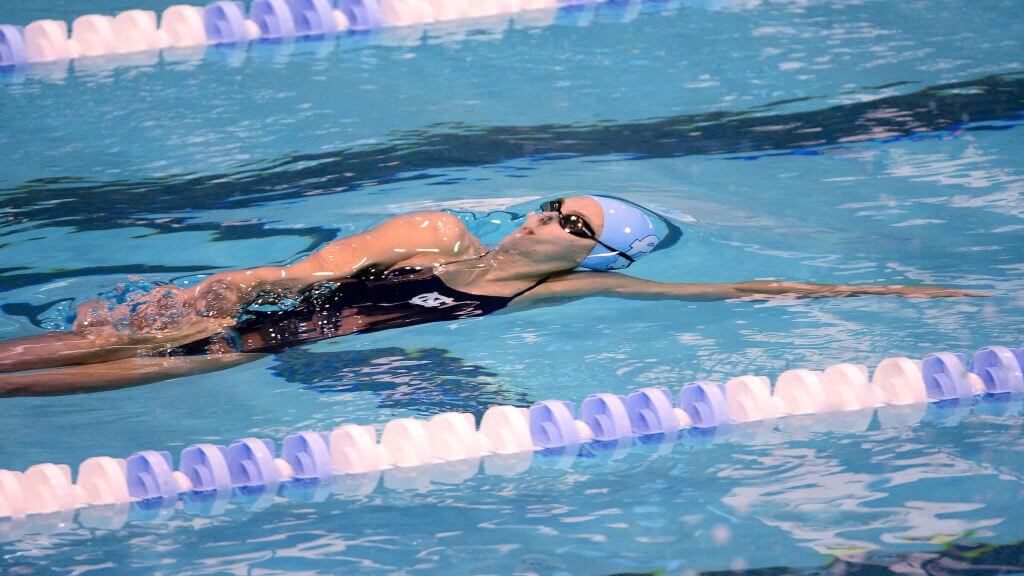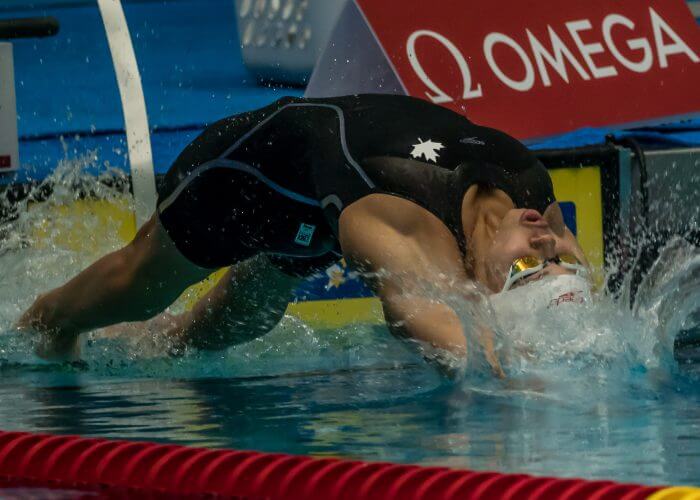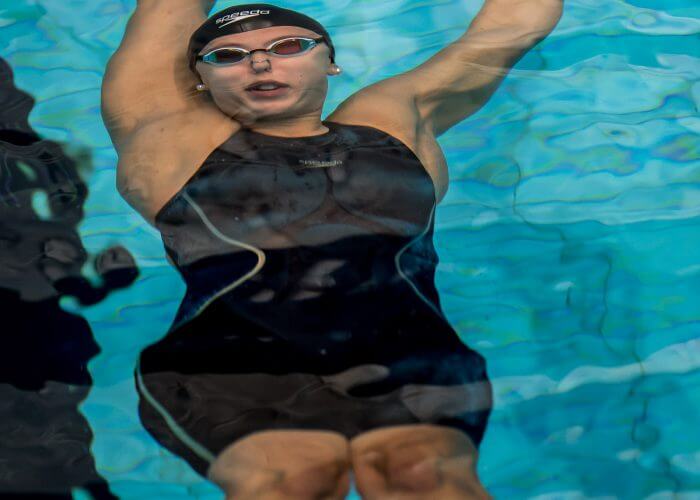The Evolution of Backstroke

By Meaghan Raab, Swimming World College Intern.
Backstroke is essentially the equivalent of freestyle, but on the back.
In the Olympic Games backstroke has an interesting history. The first event to be included was the 200-meter event for men in the 1900 Olympic Games in Paris. The 100-meter event was added in St. Louis in 1904 and the 200-meter event was later included in the lineup at the Tokyo Olympics in 1964.
Backstroke events were not added for women until 1924, when the Olympic Games returned to Paris. The first one added to the competition lineup was the 100-meter event. The 200-meter back was added 44 years later in Mexico City.

Photo Courtesy: Peter H. Bick
Backstroke is the only stroke where swimmers start in the water. This technique has been perfected over the years. Starting blocks have handles or a bar to grab onto to help lift the body out of the water. In recent years, a wedge has been added to help prevent swimmers from slipping on their start. Each swimmer still has to choose the best way for he or she to start: how far apart their feet are, the arch of their back, how far they will pull themselves up with the bar, etc.
There was a time where stand up starts were the go-to. The swimmers would stand on the gutter and use the block to hold on to and then push off so they could get a quick start, essentially performing a back dive. The fad has since ended (and the rules have changed) and all swimmers start in the water. However, there are some swimmers that pull themselves completely out of the water while maintaining the bent-leg position.
The stroke itself has changed more than the starts have changed. The first backstrokers kept their arms straight as they moved them through the water. It wasn’t until the later 1930s that the bent-arm pull was introduced to the sport by the Australians. They figured out that it was faster and more efficient to bend their elbows underwater increasing the horizontal forward push of the stroke. The original kick for backstroke was similar to a modern breaststroke kick, but later changed into a flutter kick like that of freestyle.

Photo Courtesy: Peter H. Bick
Until 1988 swimmers could kick out underwater as far as they wanted. In the 1988 Seoul Olympic Games, fans saw the medalists of the 100-meter backstroke kick 30 to 35 meters underwater on the first lap of the race. After these Games, the rule was set to 10 meters underwater. However, FINA changed this restriction to 15m in 1991.
The year 1991 brought about another change for backstroke swimmers. The backstroke flip turns were now allowed. Before this time swimmers had to touch the wall with their hand before changing directions. Now swimmers were permitted to take one stroke to cross over their body as they rotate from their back to the stomach and initiate the flip turn. This introduced a revolutionary new mechanism with which to carry speed into and out of the walls.
There are three types of turns that are used to transition from backstroke to breaststroke in the IM races. The first is the open turn. This requires touching with the hand on the back before pushing off on the stomach to start the breaststroke pullout. This turn is easiest to master, and if this turn is executed well it can be quite effective.
The second type of turn is the bucket turn. This turn is different than the open turn because it still requires touching the wall with the hand, but then the swimmer does a backward flip to get their feet onto the wall. From this point the swimmer pushes off the wall and proceeds to the breaststroke leg of the race. A bucket turn requires good lung capacity to execute the turn and the breaststroke pullout that follows it.
The third turn is the most complicated turn of the three. It requires rotating the body towards the side and touching the wall with the hand of the upper arm. After touching the wall, the swimmer will essentially do a side flip turn to get back onto their stomach to go into breaststroke. Although this type of turn can be hard to master, it is the fastest of the turns when done well.
Check out the following two sites for more info on stroke evolution– Swimming.org and yourswimvlog.com
All commentaries are the opinion of the author and do not necessarily reflect the views of Swimming World Magazine nor its staff.




Great synopsis!
What about the bent elbow recovery?
Amy Davies
Jade Hannah #famous! Keep scrolling
“Each swimmer still has to choose the best way for he or she to start”. Is this a professional magazine? Is anyone editing these articles for proper grammar? That is a horrendous sentence. You can do much better! Swimmers are a smart group. We deserve better writing. Everyone knows the correct pronouns should be “him or her”. But a good editor would probably drop them altogether and just say “Each swimmer still has to choose the best way to start.”